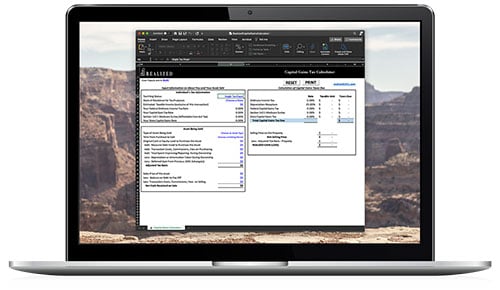
Here at Realized, we can help you complete a 1031 exchange to defer your capital gains tax bill and create a tax-efficient investment portfolio. One risk that you face when you defer your capital gains tax bill is that the capital gains tax rate may be different than it is now when it does come time to pay the bill.
In addition to deferment of capital gains, investors will generally find capital gains tax rates are lower and more straightforward than tax rates on income. Capital gains tax rates differ by investment type and state. Let’s take a look at the different types of capital gains taxes.
Brief History of Capital Gains Tax Rates
Capital gains were first taxed when the income tax was imposed in 1913. From 1998-2003, the maximum long-term capital gains rate was 20%. Since 2003, the maximum long-term capital gains rate has been 15%, with the exception of the 39.6% rate introduced in 2013, bringing back the maximum 20% capital gains rate for that bracket.
A risk for investors who are deferring capital gains taxes, whether by 1031 exchange or another method, is that capital gains tax rates may increase once the deferral ends. This will create a net overall increased tax bill.
For 2019, the capital gains tax rates are 0%, 15%, and 20%.
Examples of Long-Term Capital Gains Rates
Short-term capital gains are taxed at your ordinary-income tax rate. Consider the scenarios below:
Scenario 1 — John is married and files jointly. His income is $500,000 per year. Because he files married and has an income that is above $488,851, his capital gains rate is 20%.
Scenario 2 — Carly files her taxes as single. Her income is $60,000 per year. Because she is filing single and her income is between $39,376 and $434,550, her federal capital gains rate is 15%.
Scenario 3 — Keith files his taxes as single. His income is $35,000 per year. Because he is filing single and his income is between $0 and $39,375, his federal capital gains rate is 0%.
The above two examples demonstrate the rate federal capital gains are taxed at based on income.
Additional Medicare Tax
The Additional Medicare Tax or Medicare surtax is paid above certain thresholds based on an individual’s filing status. The tax is paid on the aggregate of wages, compensation, and any self-employment income. The rate of the Additional Medicare Tax is 0.9%.
|
Filing Status |
Threshold Amount |
|
Married filing jointly |
$250,000 |
|
Married filing separate |
$125,000 |
|
Single |
$200,000 |
|
Head of household (with qualifying person) |
$200,000 |
|
Qualifying widow(er) with dependent child |
$200,000 |
To see how the Additional Medicare Tax works, let’s look at an example. Mike’s combined wages subject to Medicare are $210,000. Mike’s excess amount is $10,000, which is taxed against the Additional Medicare Tax. The amount owed is 0.009 x $10,000 = $90.
For some, the Net Investment Income Tax (NIIT) will apply. It can apply to certain net investment income of individuals, trusts, and estates. The NIIT rate is 3.8%. The NIIT thresholds are the same ones listed in the above table.
State Tax Rates
States have different capital gains tax rates. Rates can vary widely from state to state. Outside of states with no tax rate, California clocks in with the highest capital gains tax rate at 13.3% while North Dakota comes in with the lowest rate at 2.90%.
These states do not have state capital gains taxes:
- Alaska
- Florida
- New Hampshire
- Nevada
- South Dakota
- Tennessee
- Texas
- Washington
- Wyoming
Federal capital gains tax rates are applied on top of state taxes; however, it isn’t always a simple addition to figure out the combined rate. The easiest way to see the combined rate for state taxes and capital gains taxes is to click here.
Capital gains are taxes on investment profits. There are different capital gains depending on the investment type and state. Unlike income taxes, which are progressive, capital gains taxes are static — there is generally one tax rate that applies to a particular gain.
As with any investment decision, a 1031 exchange contains several risks, including potentially facing a higher capital gains rate when you end up paying the tax bill. With that being said, the exchange process can be an excellent way to defer your capital gains tax bill and potentially maximize the value of your investments.


